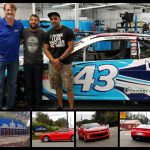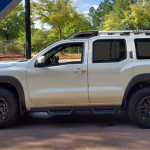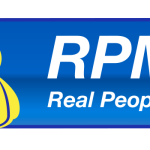It's Easier Here.
Leith Cars Blog

Back-seat driving doesn’t exactly have the greatest reputation. By definition, a passenger gives “unwanted” driving advice. But what if the driver is doing something so preposterous, so dangerous, and so inconsiderate that you simply have to say something?
We’d have to say it’s OK to back-seat drive at times, especially after talking to 1,021 passengers about the driver behaviors they’ve witnessed. Even after seeing incredibly risky behaviors, some respondents felt compelled to keep quiet. Other times, people did choose to say something to the driver, which didn’t always go smoothly. Continue reading to better understand what’s really happening on today’s roads and how passengers are attempting to keep themselves safe.
Back-Seat Patrol
Confrontation may not be easy, but most passengers had stepped up to the plate and confronted a reckless driver at least once; only 2.6% had not. But it didn’t always go well. The majority of friends, family members, significant others, and even paid drivers were at least slightly defensive in the face of critique.

Friends seemed to be easier to confront than family, however. Sixty-seven percent of respondents had vocalized dissatisfaction about their friends’ driving, compared to 60.8% of those who’d said something to a family member.
This could be due in part to how we grew up watching our parents drive. Studies have shown that teens tend to learn and model their parents’ bad driving behaviors and may not recognize it as problematic. Nevertheless, 1 in 3 parents said their children had called them out for texting while driving.
More than 1 in 10 passengers had confronted a colleague in the car. In this instance, however, we found that men were more likely than their female counterparts to confront distracted colleagues. According to Harvard Business Review, women are less likely to feel heard in the workplace, which may translate into their ability to confront co-workers about something uncomfortable, like their questionable driving.
Risky Driving Behavior
The people we spoke to had witnessed many things while riding in cars: everything from crying to changing clothes and even alcohol consumption behind the wheel (seen by 32%, 22.8%, and 27.2% respondents, respectively).

Drunk driving claims more than 10,000 lives annually in the U.S., while distracted driving leads to an average of over 1,000 crashes every day! Despite these scary numbers, though, less than half of respondents confronted the driver when they witnessed some distracted behaviors.
The only infraction that more than half of respondents were willing to speak up about was texting while driving. Around 80% had witnessed it, and 52% said something (compared to 12.9% of people who confronted a driver about drinking while driving).
This is a possible testament to the success of ads currently working to warn the public about texting and driving, like the fact that a texting driver is 23 times more likely to crash. While it’s encouraging to see passengers increasingly speaking up about this, it remains concerning that 80.4% still saw it at least once.
Facebook, Take the Wheel
Socializing while driving wasn’t solely predicated on texting, however. Many took to social media behind the wheel, as well. More than a third of respondents saw a driver using Facebook while driving, and another 27.9% saw them on Instagram.

Confrontation still proved difficult, even in the face of this danger. Only 13.2% spoke to the driver about their use of Facebook, 8.9% mentioned Instagram, and 6.8% of people spoke up when they saw someone watching YouTube videos. If someone cannot seem to put their phone down, even while driving, a confrontation may need to be more than surface level and dive into potential smartphone addiction. Only an estimated 30% of people are successful in attempting to cut back on their phone use, however.
Ranking Driver Dangers
Most respondents said drinking alcohol was the most dangerous thing a person could do behind the wheel — even more so than falling asleep! Respondents were also more likely to say drinking and driving was more dangerous than texting and driving.

Drunk driving, although dangerous, has been around for quite some time – the first arrest occurred in 1897. Texting, on the other hand, is a more recent addition to the list of driving dangers.
That said, a higher percentage of Americans own smartphones (96%) than even have opportunities to drink alcohol (65%), so texting while driving may very well become the most dangerous driving activity as time goes on. Baby boomers, who haven’t had smartphones for most of their life, were also more aware of the dangers of texting at the wheel: They saw it as more dangerous than drinking and driving.
But baby boomers were right – texting was the most reported cause of accidents from the passengers we spoke to.
Professional Driver Distractions
Very often, paid drivers (like an Uber or taxi driver) got away with distracted driving and weren’t confronted about their behavior. Nearly 85% of those who’d been in a ride-hail or taxi had witnessed distracted driving, but not all of them confronted the issue.

Nearly half of those riding in a taxi or ride-hail vehicle had seen a driver speeding, and 39.2% said their driver weaved through traffic. According to the National Highway Traffic Safety Administration, speeding contributed to more than a quarter of all traffic fatalities. Nevertheless, only 12.6% of people spoke up to their hired drivers when they sped, and 6.2% spoke up when they started weaving in and out of traffic.
Women were once again less likely to speak up to their hired drivers and were, therefore, more likely to be at risk. Less than a third of the women we spoke to (32.3%) had confronted the person they were paying to drive them. On the other hand, 41.2% of men had confronted their driver.
Safety First and Last
Our data ultimately showed that poor driving behaviors are fairly common in the U.S., and they often invite back-seat advice. But confrontation wasn’t always well-received, even when safety was at stake. Remember that you can’t always control what others do on the road, but you can dictate your own actions and take all possible precautions.
These precautions start the minute you purchase or lease a car. If you’re looking for a car to keep you and your passengers safe, head to LeithCars.com today. Leith Cars enables you to search by make, model, year, or even choose by special deals of the week.
With such a wide variety to choose from and the expertise behind our selection, you can rest assured that the proper safety precautions for the vehicle have been taken care of. After purchase, you can just focus on your driving and let our cars take you where you need to go.
Methodology
For this study, we surveyed 1,021 people using the Amazon Mechanical Turk platform. Survey participants were asked to select all of the things they’d witnessed a driver doing while they were a passenger in their car. Participants ranged in age from 18 to 78 with a mean of 38.1 and a standard deviation of 12.5. 53.6% were women, 46.0% were men, and 0.4% were nonbinary or chose not to specify a gender. 42.3% currently had children younger than age 18. 96.5% were licensed drivers.
For many questions, participants were asked to think about the most recent time they had witnessed a distracted driver. Only participants who had ridden in a taxi or ride-hail vehicle answered questions on that topic. Participants were also asked to select three options when asked what the most dangerous driving distractions were.
Limitations
This is a self-reported study, so it may be influenced by participants’ memory, minimization, telescoping, or other issues. It is neither weighted nor statistically tested.
Fair Use Statement
If you’re having trouble confronting a reckless driver, sharing this safety information online could be one way to speak up. Knowledge is power and, in this case, safety, but be sure your purposes are noncommercial, and you link back to this page.
More from my site








